
Where are the Dancers?
August 3, 2016
A friend, who was a professional ballet dancer for many years, was taken as a child by his mother to a symphony orchestra concert. Up to then, his musical experience had been largely limited to the piano accompaniment provided during his dance classes and the ballet performances he occasionally attended. He sat patiently for a short while as the conductor waved his baton and the orchestra played on, but finally, puzzled, he turned to his mother and asked, “Mom, where are the dancers?”
My childhood view was quite the opposite of my friend’s. Learning the violin, I had to first practice modest little melodies and in time mature concert works, but I had little awareness of the dance world or that it might have a connection to music. I, too, was taken at a young age by my parents to symphony orchestra concerts, but music served as an abstract messenger that encouraged my heart and mind to roam freely without any specific restraints, visual or otherwise.
Yes, growing up I began to love such disparate things as Tchaikovsky’s Swan Lake and Gershwin’s American in Paris, wonderful creations that combined dance with music, but what did ballet or Hollywood musicals have to do with the repertoire I began to tackle as a teenager—works such as Henri Wieniawski’s virtuoso Scherzo Tarantelle or Johann Sebastian Bach’s moving Partita in D Minor? It came as a surprise to eventually learn that the Wieniawski work drew on the Tarentella, a rapid whirling dance originating in Southern Italy, and that the Bach’s five movements all came from ancient dance forms.
Traditional orchestral repertoire, for one, is filled with music that at some point lost its fraternal twin, the dance, but no matter how well those works might thrive on their own, my friend would probably be unhappy at any performance:
“Where are the dancers?”
Once, on tour in Riga, Latvia, some years ago, I was invited on a free evening to a ballet concert in which Nikolai Rimsky-Korsakov’s Scheherazade, and Igor Stravinsky’s Firebird and Petrushka were performed. I’ve known and loved these ballets as purely orchestral music for much of my life. As a young man, I even had the privilege of once performing Stravinsky’s Firebird Suite with the composer conducting. But that night in Riga I heard and saw those works for the first time in their original setting—the twins of dance and music joyfully reunited. It made me feel as if my musical training had intentionally kept the dance element out of sight all these years, almost like an embarrassing relative.
On that night, the dancers emerged before my eyes, joined with music, choreography, and costumes to create a breathtaking event.
Music and dance. Or is it dance and music? You choose. Either way, the examples pour forth so easily: Natalie MacMaster dancing as she fiddles Cape Breton style, a floor full of couples swaying to Benny Goodman’s swing band, country folks exuberantly do-si-doing at the local square dance, Fred Astaire and Ginger Rogers in formal attire dancing ever so stylishly to George Gershwin’s music, a couple almost obscenely entwined as they do the sultry tango, and whirling couples enticed by the music of Johann Strauss, the waltz king.

Ginger Rogers and Fred Astaire
But isn’t all music, even music never intended to be danced to, danceable? Fast, slow, or in-between, all music has a pulse, a sense of motion.
Last April, I attended a concert billed as CelloPointe* that combined chamber music and contemporary ballet. In various exhilarating combinations, the dancers performed to music originally composed without dance in mind: the Violin Duo of Sergey Prokofiev, the Elegy by Gabriel Fauré, Variations on a Russian Song by Alexander Borodin, and finally, Johann Sebastian Bach’s Goldberg Variations arranged for string trio by Dimitry Sitkovetsky. These works need no dancers. Each is complete and a universe unto itself, especially the epic and moving Goldberg variations based on the harmonic structure of a lovely melody, the Aria, which begins the work.
The Goldberg Variations, with the suspect back story of having been written by Bach as a kind of sleeping pill to help poor old insomniac Johann Gottlieb Goldberg nod off each night, has no apparent relationship with dance. Still, the musicians performed in such a compelling manor, the dancers exhibited such imagination and deeply felt connection to the music, that I was for the moment seduced into thinking that it could be done no other way but with music and dance inseparably wedded together.
But I was wrong, or at least a little wrong. The beginning Aria upon which the entire Goldberg Variations rests turns out to be based on an old dance form, the Sarabande. Officially then, the noble Goldberg Variations might now be reclassified as dance music.
That gets me thinking once again about my own corner of music and the old dances that inhabit and inform the five movements of Bach’s D Minor Partita for solo violin. Those dances have dropped out of sight and mind for most of us who study and eventually perform this monumental work. But If I’m able to infuse the graceful Allemande, the lively Corrente, the lilting Sarabande, the high jinx Gigue, and the lusty Chaconne with a feeling for their original dance gestures, the path to a successful performance becomes clearer. And if I dare to imagine a performance to end all performances, members of the audience would spontaneously spring from their seats and dance rapturously in the aisles as I fiddle away at the Partita.
Up to now it hasn’t happened.
*CelloPointe
Dancers: Riccardo Battaglia, Tracy Finch, Chiwan Kim, Kate Loh Demarco, Shannon Maynor, Claire Mazza, Dona Wiley.
Musicians: Ida Kevafian, Jessica Lee, violins, Steven Tenenbom, viola, David Wiley, Peter Wiley, cellos.
Choreographers: Miro Magliore, Deborah Wingert, Elena Comendador, Dona Wiley.
Subscribe
Sign up to receive new stories straight to your inbox!








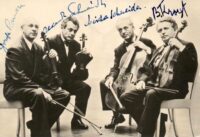





















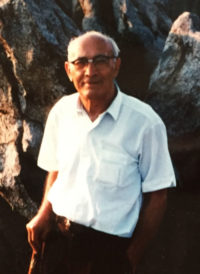


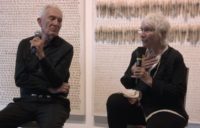


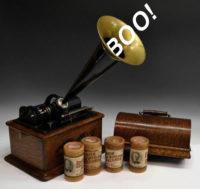
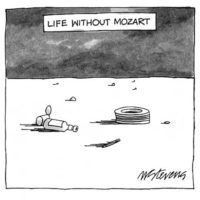















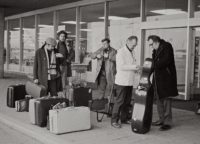



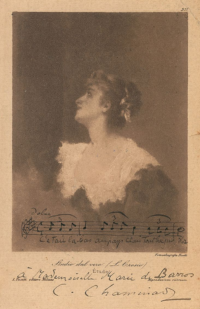




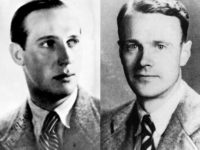


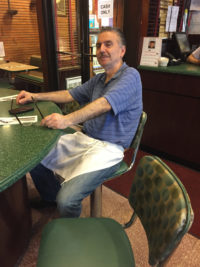



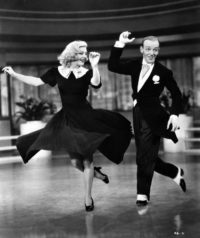







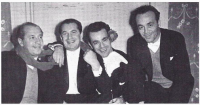
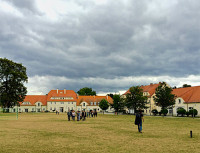
























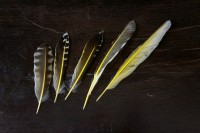

























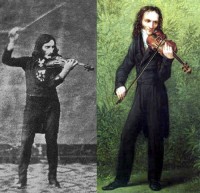



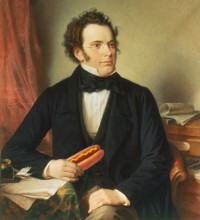

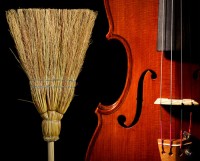





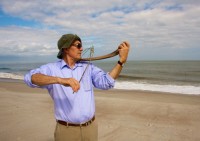























Comments
As a choral musician, this reminds me that we rarely hear sacred music of Josquin, Bach, Haydn, Bruckner etc. in their context anymore.
Funnily enough, this very subject came up at a Bach Retreat I attended in June at the Levine School of Music in Washington, D.C., where we were playing the 4th Orchestral Suite. Apart from the Ouverture (which itself contains a jig), all the movements are named for dances, and one of the coaches gave an enlightening talk on dance and Baroque music. She referred us to a book called “Dance and the Music of J. S. Bach”: a difficult but fascinating read. (Turns out the Sarabande was once as sultry–or more–as the Tango.) The terms in which 17th- and 18th-century writers spoke of rhythm shares much with their contemporaries in architecture, which, of course, is art in space, as is dance.
Well, for me it will have to be Music and Dance (M n D) in that order, because the other way round — D and M — as I know it, refers to a conversation you have, usually late at night, perhaps at the end of a date, in which you talk till the wee hours of the morning and deconstruct (or construct!) the world as we know it, and that kind of chat is called a “Deep and Meaningful” ;-)
In order to get a little more volume from the second violinist, Steinhardt reminded her that “you’re two yards back from the first violin, so you have to push just a little harder.”
On YouTube, Bach’s Goldberg Variations choreographed by Jerome Robbins: https://youtu.be/0mB94lRQqm4
I have heard you play but now want to see you dance. Any chance?
Nah.
Some years ago here in Israel, the Mark Morris group performed his ballet “V” – set to the Schumann Piano Quintet.
An interview with Morris, which appeared on August 10, 2009 in “Time Out – New York”, contained the following:
“In the slow movement of the Schumann, I said, ‘I’m mostly interested in the rests, like when nothing is happening,’ and people who are performing usually rush those because they’re afraid of there being no music. It’s not that it speeds up, it’s that it’s too short and it makes me anxious. I want it to be this sort of death silence. People are trained in a certain romantic style of playing that I don’t like that much. I like my Chopin very mathematical and brittle and beautiful. But if it’s too movie, too vibrato? I don’t like that. Even in music of the period—-Brahms and Schubert and Beethoven—I don’t like it to be so purple. It’s beautiful enough. You don’t have to beautify it. It’s plangent and dolorous. The automatic slowing down at the end of a phrase doesn’t make music more beautiful. You can just do ba-boom and it’s over. That, to me, is more interesting. Otherwise you hear everything coming; everything’s on the way and it doesn’t quite happen. And it’s a little thing.”
When I saw that ballet here in Israel some years ago, Morris’ “treatment” of the rests (with the dancers stopping for their full value) just knocked me over. It made me pay much more attention to the place of the rests in that music – and in other music as well, especially Schubert.
After reading your note in August 2014 about “The Silent Note”, and this August 2016 post, perhaps a musician who rushes the rests should be compelled to go to a performance of “V” and “see” the silence!
With best regards,
David Mendes
I’ve just been introduced to your blog recently, and as a dance fan, went to “Where are the Dancers?” almost immediately. My somewhat heretical view about choreography is this: I think one of the markers of good choreography is that it teaches me to hear a piece of music, even one I’m very familiar with, in a new and more attentive way. Only a choreographer who truly understands the music can make a good dance.
Leave a Comment
*/